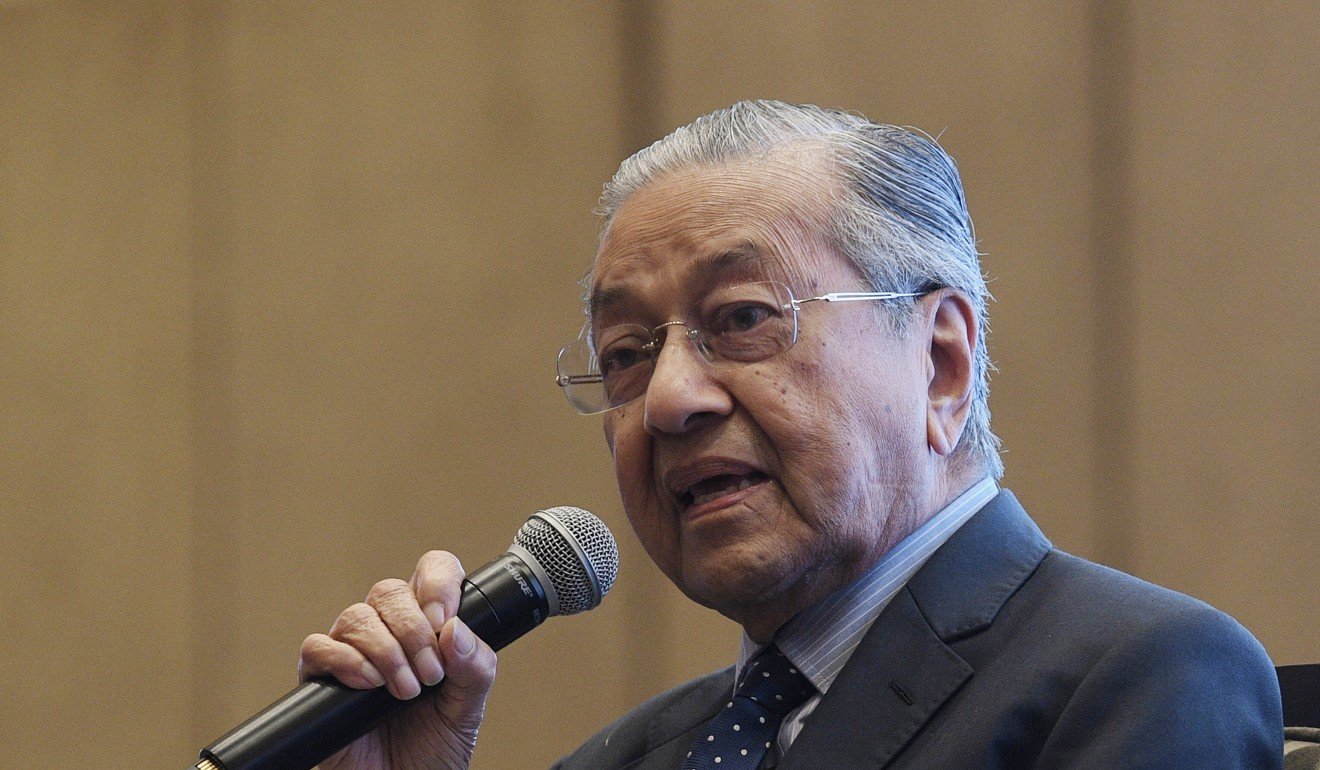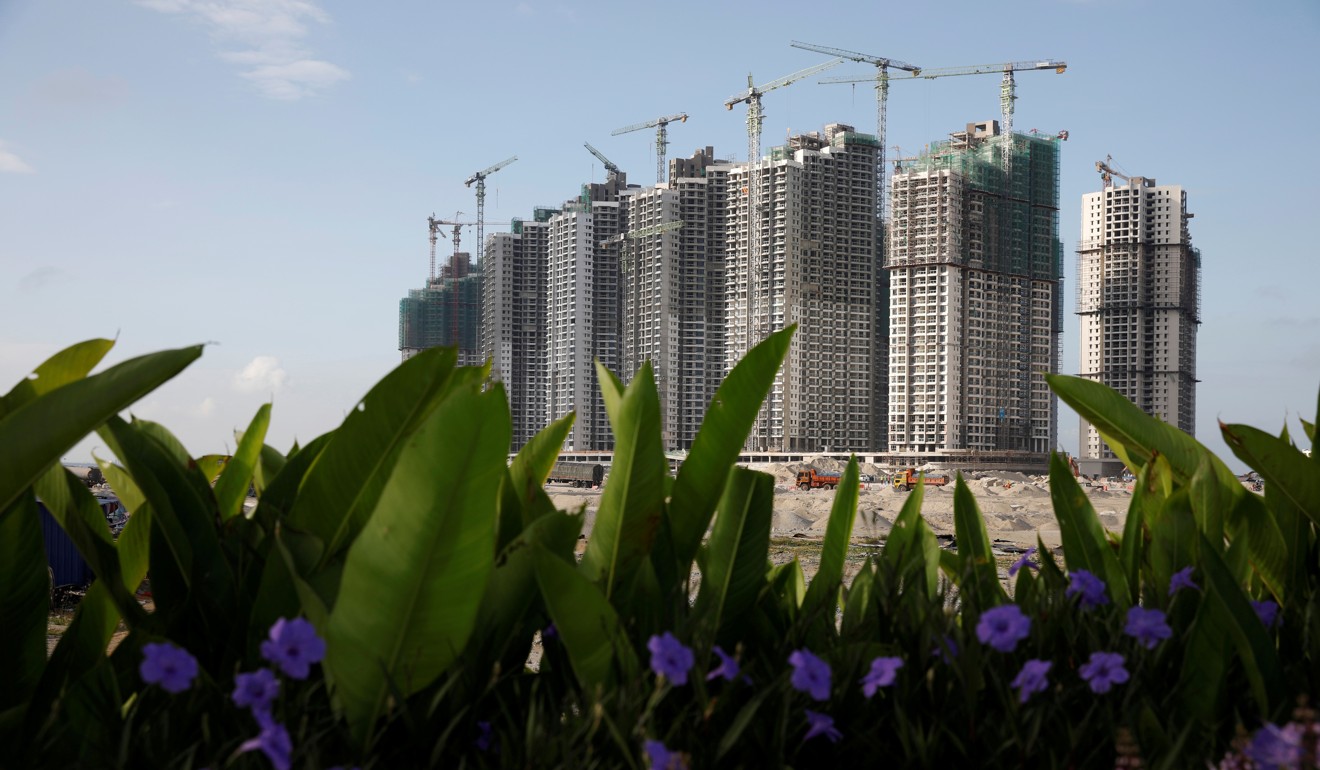
At US$145,000, Malaysian homes get cheaper for foreign buyers. Will locals pay the price?
- Foreign buyers are in for a bargain as Malaysia slashes the minimum price threshold for property sales
- Locals, though, may end up paying dearly

Foreigners looking to buy property in Malaysia can now do so for as little as 600,000 ringgit (US$145,000) following a controversial move by the government to slash the threshold for foreign buyers by 40 per cent to address an oversupply of high-rise units.
Finance Minister Lim Guan Eng announced the measure last month when he outlined Malaysia’s 2020 federal budget, saying that addressing the oversupply would boost the economy. Just days later, Prime Minister Mahathir Mohamad warned that “crisis” loomed if the glut in supply was not resolved.
“We have to get rid of this overhang so that the market for property becomes healthy again. We need to sell them or the developers will get into trouble,” Mahathir said. His housing minister, Zuraida Kamaruddin, echoed the sentiment, saying she hoped the measure would help “restore the financial position of Malaysian developers”.

The housing industry hopes the move will help shift 8.3 billion ringgit worth of high-rise units in a property market that has traditionally attracted keen interest from Singapore, Hong Kong and mainland China. However, detractors say lowering the threshold from one million ringgit (US$240,000) could trigger an influx of foreign buyers and encourage developers to inflate prices in a nation where more than one in four people cannot afford to own a home. Critics fear the lower threshold will be exploited by middle-income earners speculating on price increases rather than actually living in the units, but backers of the new measure point out that it will apply only to an estimated 14,000 units that have already been built and not future developments.
PANDERING TO DEVELOPERS?
Opposition leaders have accused the Pakatan Harapan government, which replaced the Barisan Nasional ruling coalition last year after six decades of uninterrupted rule, of pandering to developers – powerful donors in Malaysia’s political landscape – rather than addressing the needs of lower- and middle-income groups by building more affordable housing.
“The majority of the overhang are units ranging in price from 200,000 ringgit to under 600,000 ringgit. Why not give this category priority?” asked opposition leader and former minister Wee Ka Siong, who accused the government of implementing “developer-driven policies”.
Consumer rights groups have also warned against the move, asking why the government was “showing favour” to developers.
But although the property market could be left to self-correct, “financially troubled developers do not contribute to the coffers of the government”, said economist Yeah Kim Leng of Sunway University.
“It is in the interest of the government, those employed in the property sector as well as future homebuyers to have healthy developers supporting the housing supply chain,” he said.

“Depending on the take-up, encouraging foreign buyers is a quick way to reduce excess supply and strengthen the resilience of the property market, especially in a low-density country like Malaysia where space and land availability are less of a concern compared to [places] like Hong Kong and Singapore or populous countries like China,” Yeah said.
Complicating the issue is that land matters in Malaysia are usually decided by state governments. While the central government intends to lower the threshold for units in federally-governed territories next year, individual state governments are not compelled to follow suit.
Although leaders from Penang, Selangor and Johor – states suffering from an oversupply of high-end condominium units – have said they are reviewing their foreign-ownership property thresholds, two of the states have said that the 600,000-ringgit figure is too low.
In some states, foreign buyers are currently limited to property priced at 2 million ringgit(US$480,000)or above.

OUT OF REACH
Home ownership is unaffordable for many in Malaysia. Between 2012 and 2014, median house prices grew at a compound annual growth rate of 23.5 per cent while median household income grew only 11.17 per cent, according to a recent report from think tank Khazanah Research Institute.
The report said data from the Construction Industry Development Board and the National Property Information Centre indicated house prices had almost doubled over the last decade, despite construction costs increasing only slightly.
Those statistics called the government’s intentions into question, said opposition leader Razlan Rafii, adding that slashing the threshold for foreign buyers was a “profit-driven” measure that did not prioritise voters.
“Most Malaysians can’t afford homes over half a million ringgit, so why did the developers build so many luxury units?” he asked.
According to the Central Bank of Malaysia, the average new home costs 417,262 ringgit, while the nationwide “affordable” price is just 282,000 ringgit. It said 73 per cent of unsold properties were not affordable to the average Malaysian.

Before coming to power, the Pakatan Harapan coalition had made a variety of promises on housing. These included building one million affordable homes within two terms, introducing housing loan schemes aimed at the youth, and increasing developer quotas for affordable homes.
Currently, various initiatives are in place, including guarantee and rent-to-own schemes, monthly loan repayment assistance and a fund for affordable homes – schemes that Malaysians have made use of.
Sharuna Segaren, 32, has benefitted from the government’s Home Ownership Campaign, which offers a stamp duty waiver. “We decided to buy our first home due to this. On top of that, the developer was offering additional discounts as part of their promotions. This definitely was the contributing factor for buying a home. Without this we probably would have waited a while longer to buy as we saved quite a bit on our deposit and other costs through the campaign,” she said.
Such schemes, said economist Yeah, should be the government’s main focus – initiatives focused on foreign buyers should be viewed only as a “top up measure” in tackling the imbalance between supply and demand.
GOOD FOR THE MARKET
While home prices are rising faster than local wages, Malaysian property remains an attractive option for buyers from Hong Kong, mainland China and Singapore.
Indeed, property consultants have reported a surge of interest from investors in Hong Kong, where anti-government protests have entered their fifth month, and where housing remains “severely unaffordable”, according to a survey by Demographia.

Programmes aimed at attracting wealthy foreigners, such as Malaysia My Second Home, have also been popular with Chinese citizens, who accounted for 30 per cent of the more than 42,000 applications approved between 2012 and last year.
Even so, only about four per cent of the property market is currently owned by foreigners, and some industry insiders question how much of an effect lowering the investment threshold will have.
“However, if outside investors do take up the offer it will be good for the market,” said real estate consultant Foo. “Initiatives like these help the economy, so it shouldn’t be seen as just helping the developers.”
Jerry Chan, the former president of the Real Estate and Housing Developers Association’s Penang state wing, agreed.
“Buyers from Singapore, Hong Kong and China are not really going to be drawn by a lower threshold. As it stands, most foreign buyers look for quality, location and only at the major urban centres.
“The attraction of Malaysia as a property haven would be cost of the property vis-à-vis their home country’s pricing, a holiday home, long-term stay or investment. The pull factors are unchanging but the push factor is obvious in Hong Kong’s case,” he said.
“There is money inflow, developers have cash flow, government gets taxes from profits, the local authorities get their assessment and other taxes, lawyers, property agents, interior designers, furniture retailers and so on all benefit. New money into the country? Which fool wouldn’t want that?” ■